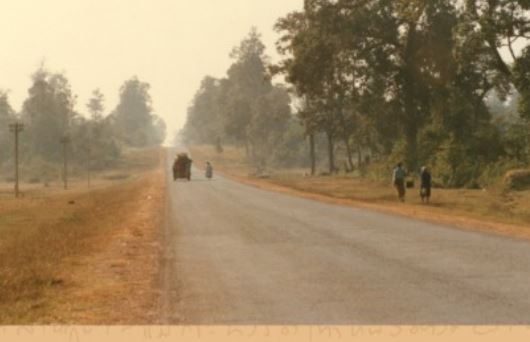Martin Platt, Isan Writers, Thai Literature: Writing and Regionalism in Modern Thailand
Singapore and Copenhagen: NUS Press and NIAS Press, 2013. Pp. vii, 249; bibliography, index.
Reviewed by Eli Elinoff.
Martin Platt’s book Isan Writers, Thai Literature: Writing and Regionalism in Modern Thailand gives a foundational history of the Northeastern Thailand’s writers and their literary contributions. It adeptly documents many of the binds facing Isan writers who sometimes sought to represent the region’s distinct culture, traditions, and political trajectory and sometimes sought simply to be seen as legitimate writers in their own right. Along the way the book raises (even if it does not always answer) many important questions surrounding representation, politics, and the experience of being a writer in contemporary Thailand. As such, it has much to offer readers interested in Isan, Thai literary history, Southeast Asian writing, and cultural production in Thailand and Southeast Asia more generally.
The book’s documentation of Isan’s writers and its shifting literary culture in the twentieth century is its chief strength. However, the book’s main limitation is that it does not provide enough critical synthesis surrounding issues of representation or much sustained analysis of the politics of writing itself to leave readers not specifically interested in Thai literature/Isan literary culture for their own sake totally satisfied. To be sure, many of these issues are raised, but Platt leaves it up to the reader to synthesize many of the details across historical periods and literary figures and thus to make sense of the complex and shifting politics of the region’s growing intelligentsia.
Given that Platt’s aim was not to subordinate his discussion of Isan’s writers to these sorts of questions, but rather to consider how the region’s writers have shaped Thai literature, I cannot fault him for not using this material in the service of such questions. Nevertheless, specific tropes and representations of Isan and its people have become very important on the Thai political landscape, both contemporary and historical. Further, Isan identity has become the subject of much discussion both within scholarly circles and political ones. In these contexts, readers seeking to use Platt’s analysis to gain a better purchase on Isan identity or on the politics of representing Isan as a place will find a great deal to engage with but will ultimately be left to put the pieces together on their own.
Instead of giving sustained attention to the politics of representation, Platt is more concerned with exploring the lives of Isan’s writers and their influence on the development of Thai literature more broadly. In this task he is successful. Isan Writers, Thai Literature both demonstrates the important role that Isan has played in producing literary talent and uncovers the themes and issues facing Isan writers as they have forged their place within the Thai literary world. Although Isan is, at best, portrayed as a space of “folk culture” and at worst “bereft of culture,” Platt’s work demonstrates the crucial, but ignored, role that the region has played in shaping Thai literature throughout the twentieth century. This point alone marks the book as an important contribution to Thai studies.
The remainder of this review is accessible here.
 Facebook
Facebook  Twitter
Twitter  Soundcloud
Soundcloud  Youtube
Youtube  Rss
Rss 
